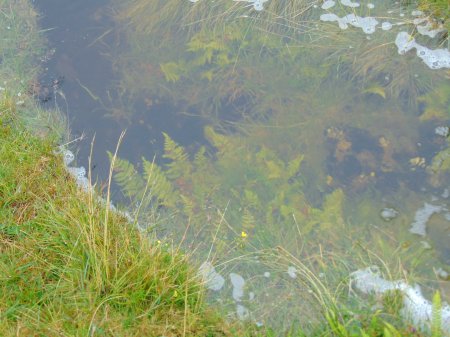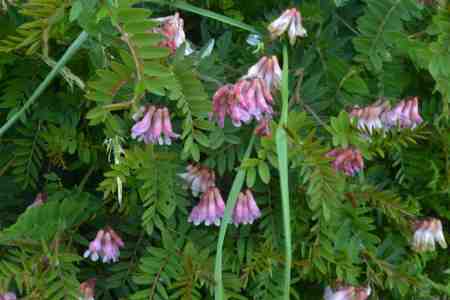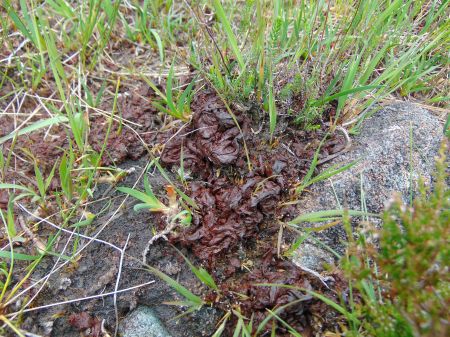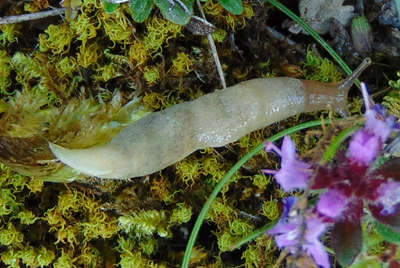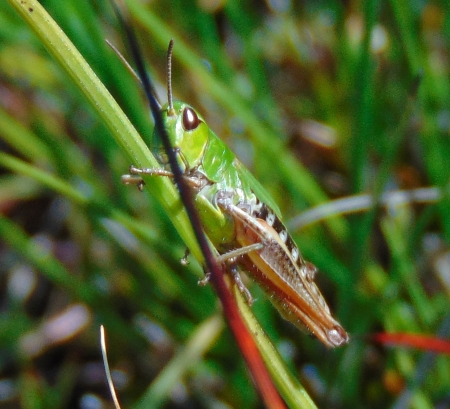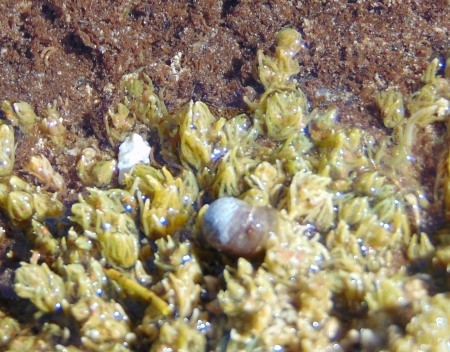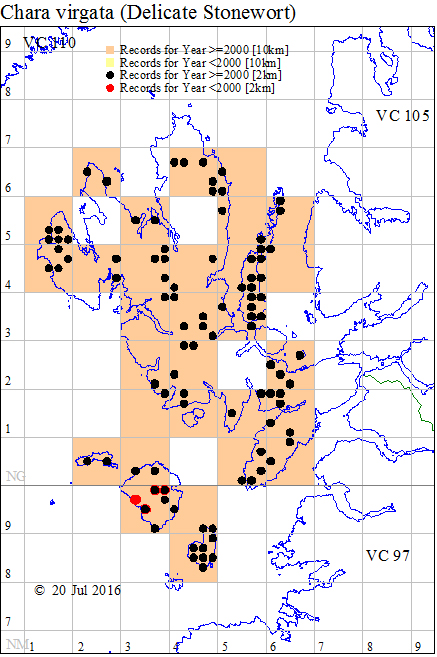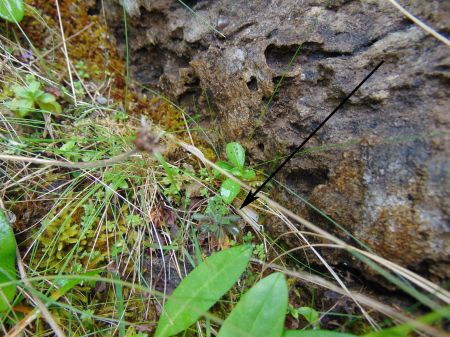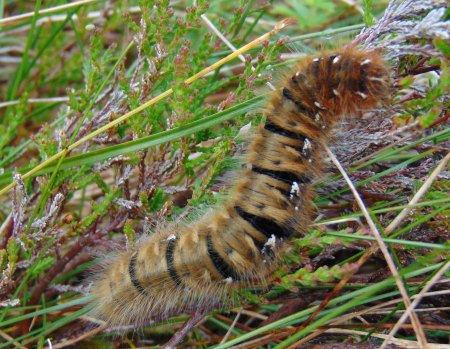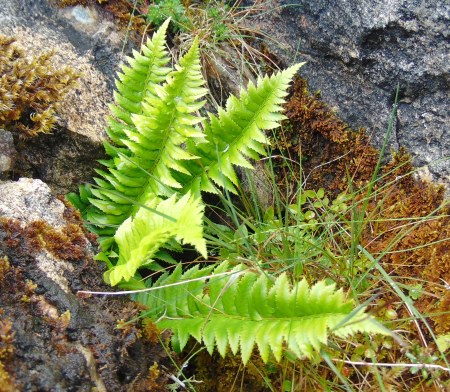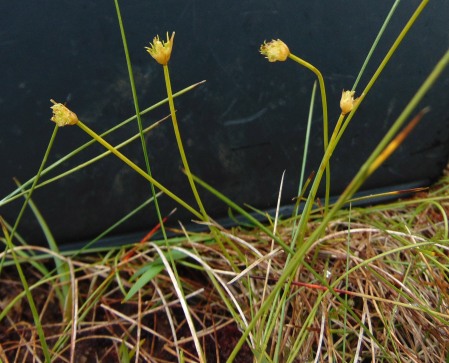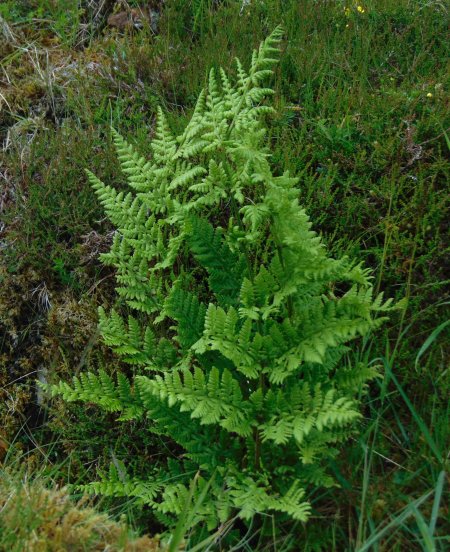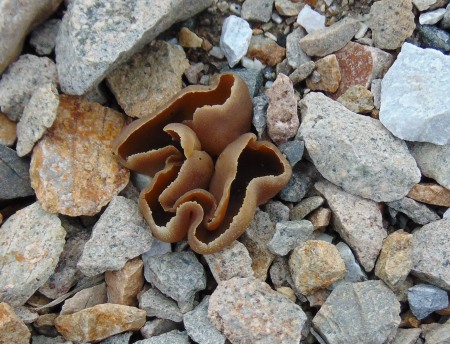On Friday I took the boat from Elgol and had six hours at Loch Coruisk. The scenery was, of course, dramatic, but the plants largely confirmed the view that mountains that are good for mountaineers are not great for botanists. Mind you, I did no climbing and there were a few things of note such as Salix x ambigua (S. aurita x repens) which is known elsewhere near burns in NG42 but not in the south end where these were.
I also spotted four plants in NG41 that had not been recorded since before 2000 and two in NG42, though one of these was a tiny sapling of Viburnum opulus (Guelder-rose) which looks unlikely to survive the winter.
Some of the pools had these features in them which I imagine, perhaps rather fancifully, are caused by erupting gas from rotting vegetation:
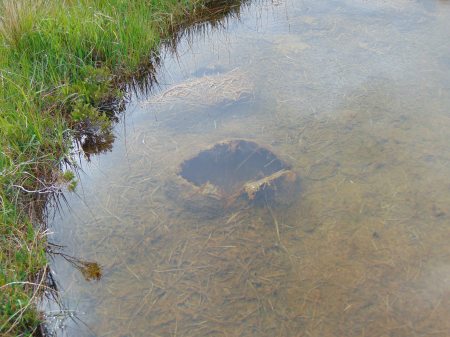
The only rich area was near the Coruisk Memorial Hut where there were some relatively interesting cliffs and rocks, freshwater marsh and salt marsh. Here in tetrad NG41Z I found 127 species including some I hadn’t been expecting like Galeopsis tetrahit s.s. (Common Hemp-nettle) and Odontites vernus (Red Bartsia).
There was lots of Rosa spinosissima (Burnet Rose) growing in some of the freshwater beaches of Loch Coruisk and some actually in the river at its current level.

Rosa spinosissima in Coruisk River
Some had this gall on it, caused by the gall wasp Diplolepis spinosissimae:
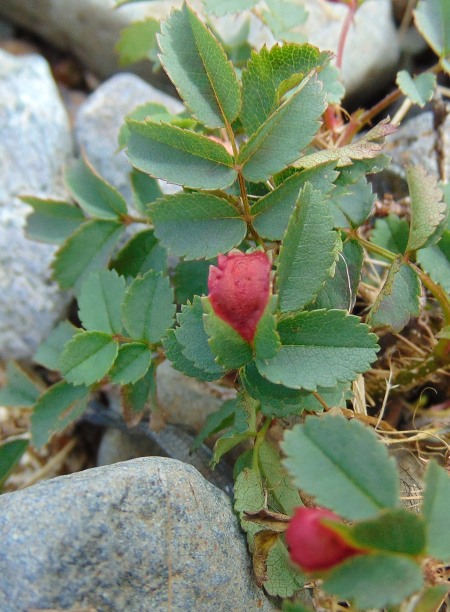
D. spinosissimae galls
I found this a couple of years ago at Talisker Bay but there remain very few records on the NBN Gateway.
I also spotted these leaf mines on Lonicera periclymenum (Honeysuckle). The miners are yet to be definitively identified. Later: Murdo and I have agreed it is larvae of the Dipteran fly Chromatomyia aprilina based on the long streaks of frass. See British Leafminers page.
